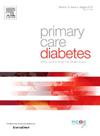Social isolation, loneliness, and incidence of type 2 diabetes mellitus: A systematic review and meta-analysis
IF 2.6
4区 医学
Q3 ENDOCRINOLOGY & METABOLISM
引用次数: 0
Abstract
Objective
Social isolation and loneliness are forms of social disconnection that have been linked to increased risk of many metabolic disorders, including Type 2 Diabetes Mellitus (T2DM). However, evidence to support this relation is lacking. This study aims to investigate the association between social isolation, loneliness, and the incidence risk of T2DM.
Methods
We searched various electronic databases including MEDLINE (via PubMed), Embase, the Cochrane Library, and Google scholar to retrieve qualitative studies comparing the incidence of T2DM in patients with social isolation or loneliness. We performed statistical analysis on RevMan 5.4 using the random effect model.
Results
Loneliness was associated with a significantly increased incidence of T2DM (OR: 1.44; 95 % CI: 1.19–1.73; P:0.0001), with high heterogeneity (I² = 95 %). Sensitivity analysis indicated potential variability due to differences in loneliness measurements. Social isolation also showed a significant association with T2DM (OR: 1.88; 95 % CI: 1.38–2.58; P:<0.0001) with high heterogeneity (I² = 98 %).
Conclusion
In conclusion, we found social isolation and loneliness are independently associated with a higher incidence of T2DM. These findings underscore the need to address psychosocial elements like social isolation and loneliness in the management of T2DM. However, further studies with larger sample sizes, longer follow-up durations, and uniform criteria is warranted to better understand the association between social isolation, loneliness and T2DM.
社会隔离、孤独与 2 型糖尿病的发病率:系统回顾和荟萃分析。
目的:社会隔离和孤独是社会脱节的形式,与许多代谢紊乱的风险增加有关,包括2型糖尿病(T2DM)。然而,缺乏支持这种关系的证据。本研究旨在探讨社会隔离、孤独感与2型糖尿病发病风险之间的关系。方法:我们检索了各种电子数据库,包括MEDLINE(通过PubMed)、Embase、Cochrane图书馆和谷歌scholar,以检索比较社会隔离或孤独感患者中T2DM发病率的定性研究。我们采用随机效应模型对RevMan 5.4进行统计分析。结果:孤独感与T2DM发病率显著增加相关(OR: 1.44;95 % ci: 1.19-1.73;P:0.0001),异质性高(I²= 95 %)。敏感性分析表明,由于孤独感测量的差异,潜在的可变性。社会孤立也与T2DM有显著关联(OR: 1.88;95 % ci: 1.38-2.58;结论:总之,我们发现社会孤立和孤独与T2DM的高发病率独立相关。这些发现强调了在T2DM管理中需要解决社会隔离和孤独等社会心理因素。然而,进一步的研究需要更大的样本量、更长的随访时间和统一的标准来更好地了解社会隔离、孤独感和2型糖尿病之间的关系。
本文章由计算机程序翻译,如有差异,请以英文原文为准。
求助全文
约1分钟内获得全文
求助全文
来源期刊

Primary Care Diabetes
ENDOCRINOLOGY & METABOLISM-PRIMARY HEALTH CARE
CiteScore
5.00
自引率
3.40%
发文量
134
审稿时长
47 days
期刊介绍:
The journal publishes original research articles and high quality reviews in the fields of clinical care, diabetes education, nutrition, health services, psychosocial research and epidemiology and other areas as far as is relevant for diabetology in a primary-care setting. The purpose of the journal is to encourage interdisciplinary research and discussion between all those who are involved in primary diabetes care on an international level. The Journal also publishes news and articles concerning the policies and activities of Primary Care Diabetes Europe and reflects the society''s aim of improving the care for people with diabetes mellitus within the primary-care setting.
 求助内容:
求助内容: 应助结果提醒方式:
应助结果提醒方式:


